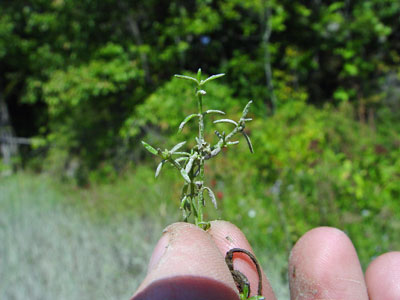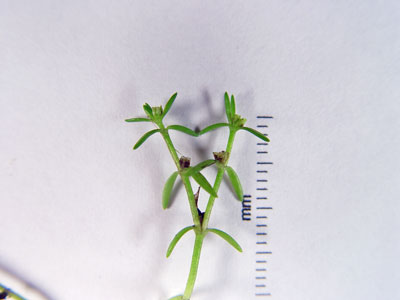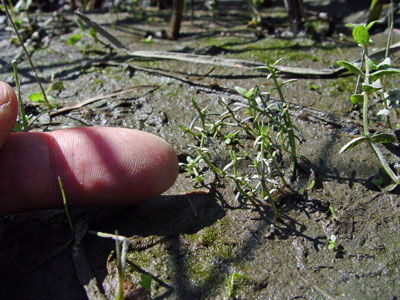DACF Home → Bureaus & Programs → Maine Natural Areas Program → Communities, Plants, and Animals → Rare Plants → Crassula aquatica

Crassula aquatica (L.) Schoenl.
Pygmyweed
- State Rank: S2S3
- Global Rank: G5
- State Status: Special Concern
Habitat: Margins of pools and on fresh to tidal shores. [Open water (non-forested, wetland)]
Range: Newfoundland to St. Lawrence River, south to Maryland; Louisiana to Texas, locally northward.
Aids to Identification: Pygmyweed is a tiny, tiny herbaceous plant which grows as sprawling mats on the sandy and muddy bottoms of estuaries and shallow shores. The weak stems may be up to 10 cm long, but usually trail across the ground surface: the entire plant thus stands often only 2 cm high. The small leaves, approximately 0.5 cm long, are borne in opposite pairs on the stem, and join each other at the base. The tiny, inconspicuous flowers are borne in the leaf axils.

Ecological characteristics: Crassula aquatica is a species of fresh to brackish shores. In Maine, it is exclusively intertidal, growing only slightly above the low tide line; it is thus covered and uncovered twice daily by the tides, but spends much of its time submerged. Little is known about the specific ecological requirements of the species. At two known Maine stations it grows in muddy crevices of rock outcrops in the intertidal zone.
Phenology: An annual, flowers in late summer.
Family: Crassulaceae
Synonyms: Bulliarda aquatica (L.) DC.; Hydrophila aquatica (L.) House; Tillaea angustifolia Nutt.; Tillaea aquatica L.; Tillaeastrum aquaticum (L.) Britt.

Known Distribution in Maine: This rare plant has been documented from a total of 16 town(s) in the following county(ies): Kennebec, Lincoln, Penobscot, Sagadahoc, York.
Reason(s) for rarity: Sporadic through much of range, and near northern limit. Also possibly overlooked.
Conservation considerations: Prevent degradation of estuary habitat from other uses.